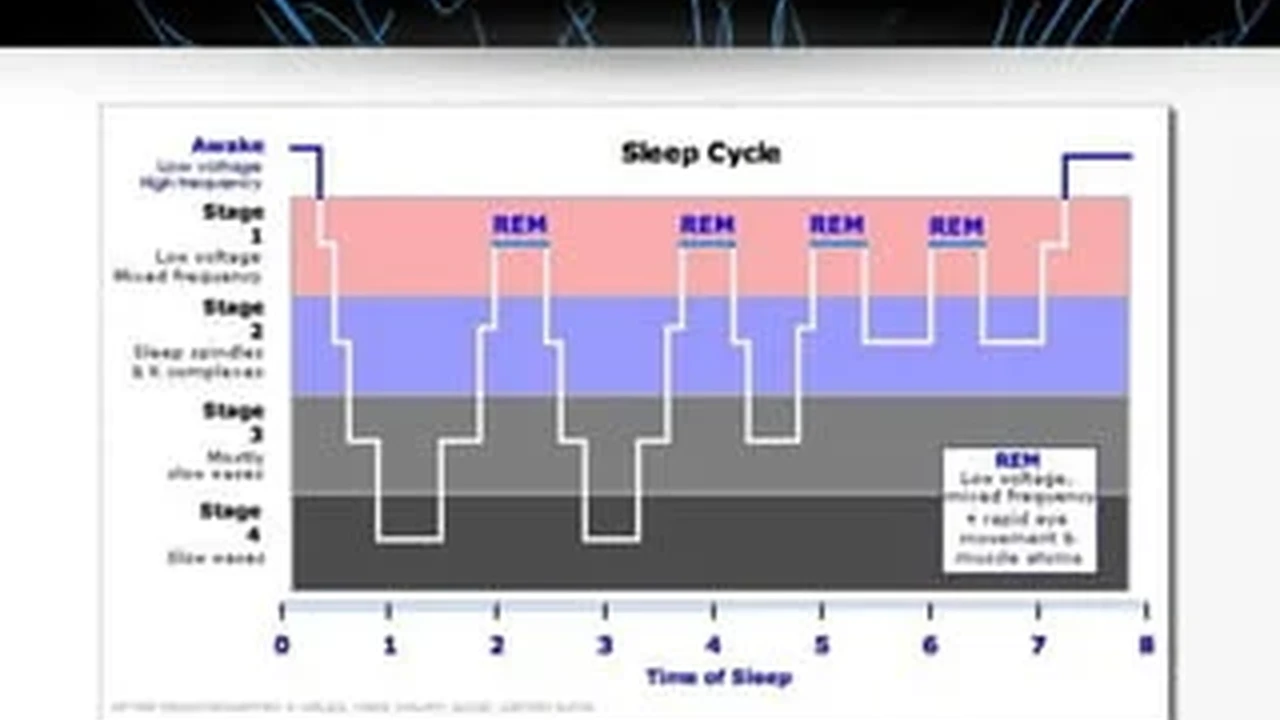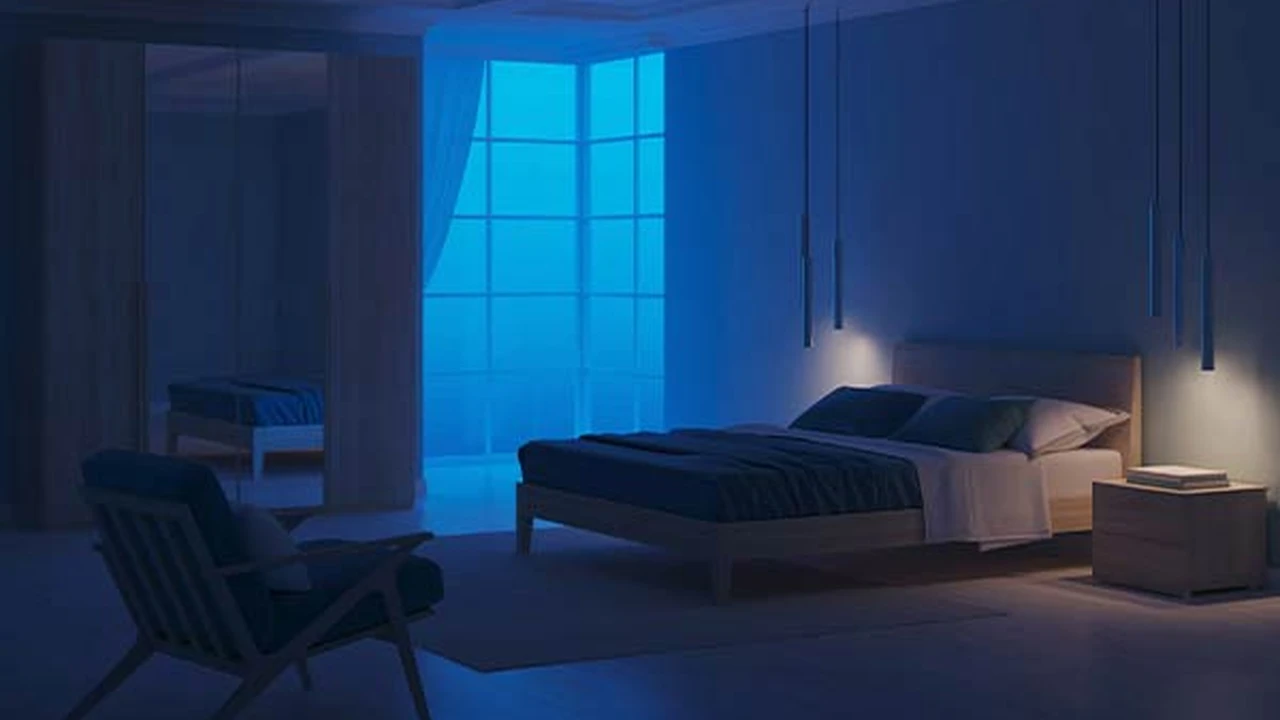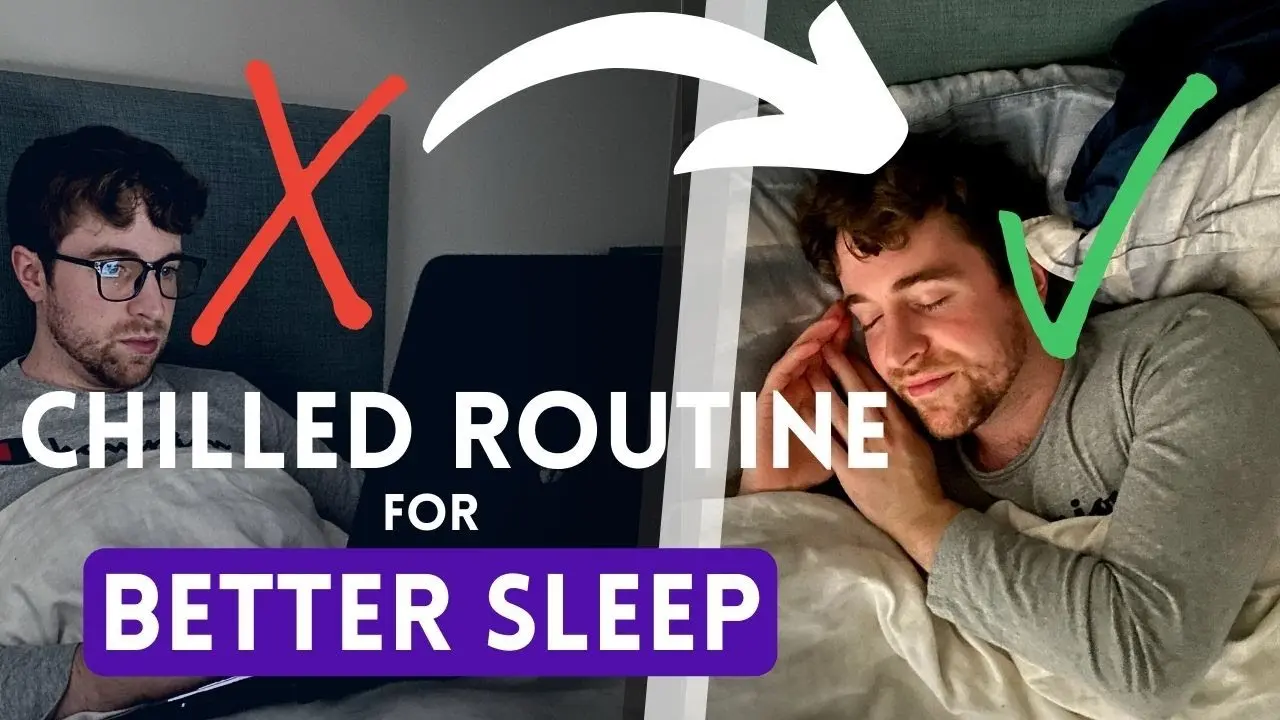EEG Based Sleep Trackers Explained
Delve into EEG-based sleep trackers for precise brainwave analysis. Get clinical-grade insights into your sleep stages.

EEG Based Sleep Trackers Explained
Understanding EEG Technology for Sleep Tracking
Alright, let's talk about sleep tracking, but not just any sleep tracking. We're diving deep into the world of EEG-based sleep trackers. You've probably heard of wearables like smartwatches or rings that claim to track your sleep, and while they're great for general trends, EEG (Electroencephalography) is a whole different ball game. This is where things get really precise, giving you insights into your brainwave activity during sleep, which is the gold standard for understanding sleep stages.
So, what exactly is EEG? In simple terms, it's a method to record the electrical activity of your brain. Your brain cells communicate through electrical impulses, and these impulses create brainwaves. Different brainwave patterns correspond to different states of consciousness, including our various sleep stages. Traditional sleep studies, known as polysomnography (PSG), use multiple EEG electrodes placed on your scalp to get a comprehensive picture of your sleep. Consumer EEG sleep trackers aim to bring a simplified, at-home version of this technology to your bedroom.
Why is this important? Because knowing your exact sleep stages – Wake, REM (Rapid Eye Movement), N1, N2, and N3 (deep sleep) – is crucial for understanding your sleep quality. Many regular trackers estimate these stages based on heart rate, movement, and breathing. EEG, however, directly measures the brain activity that defines these stages, offering a much more accurate and reliable assessment. This means you're getting closer to clinical-grade data right in your own home.
How EEG Sleep Trackers Work Brainwave Measurement
The magic of EEG sleep trackers lies in their ability to detect and interpret those tiny electrical signals from your brain. These devices typically have electrodes that make contact with your skin, usually on your forehead or around your ears, where they can pick up the electrical activity. These signals are then amplified and processed by the device's algorithms. Think of it like a highly sensitive microphone listening to the subtle hum of your brain.
Each sleep stage has a distinct brainwave signature:
- Wake: Characterized by alpha and beta waves.
- N1 (Light Sleep): Slower theta waves start to appear.
- N2 (Light Sleep): Sleep spindles and K-complexes, unique brainwave patterns, become prominent.
- N3 (Deep Sleep/Slow-Wave Sleep): Dominated by very slow delta waves, this is the most restorative stage.
- REM (Rapid Eye Movement Sleep): Brain activity resembles wakefulness, but your body is paralyzed, and this is where most dreaming occurs.
By accurately identifying these brainwave patterns, EEG trackers can precisely determine when you enter and exit each sleep stage, how long you spend in each, and even detect micro-arousals or disturbances that other trackers might miss. This level of detail can be incredibly insightful for anyone looking to truly optimize their sleep.
Benefits of EEG Sleep Tracking Accurate Sleep Stage Analysis
So, what's the big deal about having this super accurate sleep data? Well, the benefits are pretty significant, especially if you're serious about understanding and improving your sleep health. Here are some key advantages:
- Unparalleled Accuracy: As mentioned, EEG is the most accurate way to measure sleep stages outside of a lab. This means you're getting reliable data that you can trust to make informed decisions about your sleep habits.
- Deeper Insights into Sleep Quality: It's not just about how many hours you sleep, but the quality of those hours. An EEG tracker can show you if you're getting enough deep sleep for physical restoration or enough REM sleep for cognitive function and emotional processing.
- Identifying Sleep Disturbances: These devices can often detect subtle sleep disturbances, like brief awakenings or periods of restless sleep, that you might not even remember. This can be crucial for identifying underlying issues.
- Personalized Sleep Optimization: With precise data, you can experiment with different sleep hygiene practices, dietary changes, or exercise routines and see their direct impact on your sleep architecture. This allows for truly personalized sleep optimization.
- Early Detection of Potential Issues: While not diagnostic tools, consistent patterns of disrupted sleep stages might indicate a need to consult a sleep specialist, potentially leading to earlier diagnosis and treatment of sleep disorders.
For anyone who feels like they're sleeping but not feeling rested, or for athletes and professionals looking to maximize recovery and cognitive performance, an EEG sleep tracker can be a game-changer.
Comparing EEG Trackers vs Wearables The Accuracy Divide
Let's clear up a common confusion: how do these advanced EEG trackers stack up against your everyday fitness trackers or smartwatches? It's like comparing a professional camera to a smartphone camera – both take pictures, but one offers a much higher level of detail and precision.
Most popular wearables (like Apple Watch, Fitbit, Oura Ring) use a combination of accelerometers (to detect movement), heart rate sensors (PPG), and sometimes temperature sensors to estimate sleep stages. They infer sleep stages based on these physiological signals. For example, a low heart rate and minimal movement might suggest deep sleep. While these devices are convenient and provide good general trends, their accuracy in precisely identifying sleep stages, especially N1, N2, N3, and REM, can vary significantly and is often less reliable than lab-based PSG.
EEG trackers, on the other hand, directly measure the electrical activity of your brain. This is the same fundamental principle used in clinical sleep labs. Because they're looking at the actual brainwaves that define sleep stages, their accuracy is inherently much higher. They can differentiate between subtle brain states that other sensors simply can't pick up.
So, if you're looking for general sleep duration and consistency, a regular wearable might suffice. But if you need granular data on your sleep architecture, want to understand your deep and REM sleep percentages with high confidence, or are trying to pinpoint specific sleep disturbances, an EEG-based tracker is the way to go. It's a trade-off between convenience and clinical-level accuracy.
Top EEG Sleep Trackers on the Market Product Reviews and Features
Alright, let's get to the exciting part: what are some of the best EEG-based sleep trackers you can actually buy right now? Keep in mind that this is a niche but growing market, and these devices often come with a higher price tag due to their advanced technology. Here are a few standout options, along with their features, use cases, and approximate pricing:
1. Dreem 3 Headband
Product Overview: The Dreem 3 is arguably one of the most comprehensive consumer EEG sleep trackers available. It's a soft, comfortable headband that you wear while sleeping, equipped with multiple EEG electrodes, an accelerometer, and a pulse oximeter. It's designed to provide highly accurate sleep stage analysis, similar to a lab PSG.
Key Features:
- Clinical-Grade EEG: Multiple dry EEG electrodes for precise brainwave measurement.
- Advanced Sleep Staging: Accurately identifies Wake, N1, N2, N3, and REM sleep.
- Sleep Coaching Programs: Offers personalized coaching based on your sleep data, including CBT-I (Cognitive Behavioral Therapy for Insomnia) programs.
- Smart Alarm: Wakes you during a light sleep stage within a set window for a more refreshed feeling.
- Audio Features: Built-in bone conduction speakers for white noise, meditation, or sleep-inducing sounds.
- Heart Rate & Breathing: Tracks these vital signs for a more complete picture.
Use Cases: Ideal for individuals with chronic sleep issues (insomnia, poor sleep quality), athletes seeking optimal recovery, or anyone who wants the most detailed and accurate sleep insights possible at home. It's also great for those who want guided programs to improve their sleep.
Pros: Extremely accurate sleep staging, comprehensive data, personalized coaching, comfortable design for a headband.
Cons: Higher price point, requires wearing a headband to bed, app subscription might be required for full features.
Approximate Price: ~$400 - $500 USD (Note: Availability can vary, and sometimes they are sold out or have limited stock due to demand).
2. Muse S Headband
Product Overview: While primarily known as a meditation and brain-sensing headband, the Muse S (the 'S' stands for 'Sleep') has robust sleep tracking capabilities using EEG. It's designed to be comfortable enough to wear all night and offers insights into your sleep stages and position.
Key Features:
- EEG Sensors: Measures brain activity to determine sleep stages.
- Sleep Journeys & Soundscapes: Offers guided meditations and immersive soundscapes to help you fall asleep.
- Sleep Position Tracking: Identifies how your sleep position might affect your rest.
- Post-Sleep Reports: Provides detailed reports on your sleep architecture, including deep sleep and REM percentages.
- Comfortable Fabric Design: Made with soft, breathable fabric for overnight wear.
Use Cases: Excellent for individuals who want to combine meditation and mindfulness practices with accurate sleep tracking. It's also good for those who struggle with falling asleep and want guided audio experiences.
Pros: Dual-purpose (meditation and sleep), comfortable fabric, good for sleep onset issues, accurate EEG data.
Cons: May not be as comprehensive in sleep coaching as Dreem, still requires wearing a headband.
Approximate Price: ~$350 - $400 USD.
3. Withings Sleep Analyzer (Under-Mattress Sensor)
Product Overview: The Withings Sleep Analyzer is a unique entry in the EEG space because it's a non-wearable device. You simply slide it under your mattress, and it uses pneumatics (air pressure changes) and a built-in microphone to detect breathing patterns, heart rate, and body movements, which are then analyzed with advanced algorithms to infer sleep stages, including micro-arousals and even sleep apnea detection.
Key Features:
- Non-Wearable Convenience: No need to wear anything on your body.
- Sleep Cycle Analysis: Tracks sleep stages (deep, light, REM) and duration.
- Sleep Apnea Detection: Identifies breathing disturbances indicative of sleep apnea.
- Snoring Detection: Records and analyzes snoring events.
- Heart Rate Tracking: Monitors your heart rate throughout the night.
- Home Automation Integration: Can integrate with smart home systems (e.g., turn off lights when you get into bed).
Use Cases: Perfect for those who dislike wearing devices to bed but still want detailed sleep insights. It's particularly strong for detecting sleep breathing issues like apnea and snoring.
Pros: Extremely convenient (set it and forget it), excellent for sleep apnea and snoring detection, integrates with the Withings health ecosystem.
Cons: While highly advanced, it's not 'true' direct EEG measurement from the brain like the headbands. It infers sleep stages from other physiological signals, making it a hybrid approach. May not be as precise for subtle brainwave patterns as direct EEG headbands.
Approximate Price: ~$130 - $150 USD.
4. Sleepon Go2Sleep Ring (Hybrid Approach)
Product Overview: The Sleepon Go2Sleep Ring is a compact, finger-worn device that focuses on providing comprehensive sleep data, including blood oxygen levels, heart rate, and movement. While not a direct EEG device in the traditional sense, it uses advanced algorithms to infer sleep stages with a focus on respiratory events, which are crucial for sleep quality.
Key Features:
- Blood Oxygen Monitoring (SpO2): Crucial for detecting sleep breathing issues.
- Heart Rate Tracking: Continuous heart rate monitoring.
- Movement Tracking: Detects restlessness and body position changes.
- Sleep Stage Analysis: Estimates sleep stages based on the above metrics.
- Vibration Alarm: Gentle vibration to wake you up without disturbing a partner.
- Comfortable Ring Design: Small and lightweight for comfortable wear.
Use Cases: Excellent for individuals concerned about sleep apnea or low blood oxygen during sleep. It's also a good option for those who prefer a less intrusive wearable than a headband.
Pros: Very comfortable and discreet, strong focus on respiratory health, good for detecting sleep disturbances related to breathing.
Cons: Not a direct EEG measurement, so sleep stage accuracy might not be as high as dedicated EEG headbands. Relies on inference rather than direct brainwave capture.
Approximate Price: ~$100 - $150 USD.
Interpreting Your EEG Sleep Data Actionable Insights
So you've got your fancy EEG sleep tracker, and it's spitting out all this data. Now what? The real value comes from understanding what those graphs and numbers mean and, more importantly, how to use that information to actually improve your sleep. Here's how to interpret your data and turn it into actionable insights:
Focus on Sleep Stages Percentages
Your tracker will likely show you the percentage of time you spent in each sleep stage. Generally, for healthy adults, a typical night's sleep might look something like this:
- Wake: 0-5% (brief awakenings are normal)
- N1: 5-10%
- N2: 45-55%
- N3 (Deep Sleep): 15-25%
- REM Sleep: 20-25%
If you consistently see very low percentages of deep sleep or REM sleep, that's a red flag. Deep sleep is crucial for physical restoration, growth hormone release, and immune function. REM sleep is vital for memory consolidation, learning, and emotional regulation. If these are consistently low, consider factors like:
- Late-night exercise: Can reduce deep sleep.
- Alcohol consumption: Heavily suppresses REM sleep.
- Stress: Can fragment sleep and reduce deep/REM.
- Irregular sleep schedule: Disrupts your natural sleep architecture.
Look at Sleep Latency and Efficiency
Sleep Latency: How long it takes you to fall asleep. If it's consistently over 30 minutes, you might have issues with sleep onset insomnia. Try relaxing evening routines, avoiding screens before bed, or meditation.
Sleep Efficiency: The percentage of time you spend actually sleeping while in bed. Aim for 85% or higher. If it's low, it means you're spending a lot of time awake in bed, which can be a sign of fragmented sleep or insomnia. This is where identifying micro-arousals from your EEG data becomes super helpful.
Identify Sleep Disturbances
Many EEG trackers can highlight periods of restlessness, awakenings, or even specific brainwave anomalies. If you see frequent awakenings, even brief ones you don't remember, consider:
- Environmental factors: Noise, light, temperature.
- Diet: Late-night meals, caffeine, alcohol.
- Underlying conditions: Sleep apnea, restless legs syndrome (though these require medical diagnosis).
Track Trends Over Time
Don't just look at one night's data. The real power of these trackers is in identifying trends over weeks and months. Did your deep sleep improve after you started meditating? Did your REM sleep increase when you cut back on alcohol? This allows you to connect your daily habits directly to your sleep quality.
Use Coaching Features (If Available)
Devices like the Dreem 3 offer personalized coaching. Don't ignore these! They're designed to help you implement changes based on your specific data, often incorporating principles from cognitive behavioral therapy for insomnia (CBT-I), which is a highly effective non-pharmacological treatment for sleep issues.
Remember, while these devices provide incredible insights, they are not medical diagnostic tools. If you have persistent sleep problems or suspect a sleep disorder, always consult with a healthcare professional or a sleep specialist. Your EEG data can be a valuable tool to share with them, helping them understand your sleep patterns better.
The Future of Sleep Technology AI and Personalized Sleep Coaching
The world of sleep technology is evolving at a rapid pace, and EEG-based trackers are just one exciting piece of the puzzle. The future is looking even more personalized and integrated, with artificial intelligence (AI) playing a massive role in how we understand and improve our sleep.
Imagine a future where your sleep tracker doesn't just tell you how you slept, but actively coaches you in real-time, adapting to your unique needs. This is where AI comes in. AI algorithms can analyze vast amounts of sleep data – not just from you, but from millions of users – to identify patterns, predict issues, and offer highly tailored recommendations. This goes beyond generic advice; it's about understanding your individual sleep physiology and behavioral patterns.
We're already seeing glimpses of this with devices that offer personalized sleep programs. In the future, AI could:
- Predict Sleep Disturbances: Based on your daily activities, stress levels, and previous sleep patterns, AI might predict a restless night and suggest proactive measures.
- Real-Time Interventions: Imagine a smart pillow that subtly adjusts its firmness or temperature based on your sleep stage, or a smart speaker that plays specific frequencies to enhance deep sleep, all guided by AI.
- Hyper-Personalized Coaching: AI could create dynamic, evolving sleep plans that adapt daily based on your progress, mood, and even external factors like weather or work demands.
- Integration with Health Data: Your sleep data could seamlessly integrate with other health metrics (nutrition, exercise, mental health) to provide a holistic view of your well-being and how sleep impacts everything.
- Advanced Diagnostics (with Medical Oversight): While still requiring medical validation, AI could assist in pre-screening for sleep disorders, flagging patterns that warrant a professional consultation, making diagnosis more accessible.
The goal is to move from simply tracking sleep to actively optimizing it, making sleep health as manageable and personalized as fitness or nutrition. This means more comfortable, less intrusive devices, smarter algorithms, and a greater understanding of the complex interplay between our brains, bodies, and the environment as we sleep. It's an exciting time to be interested in sleep science!
:max_bytes(150000):strip_icc()/277019-baked-pork-chops-with-cream-of-mushroom-soup-DDMFS-beauty-4x3-BG-7505-5762b731cf30447d9cbbbbbf387beafa.jpg)





